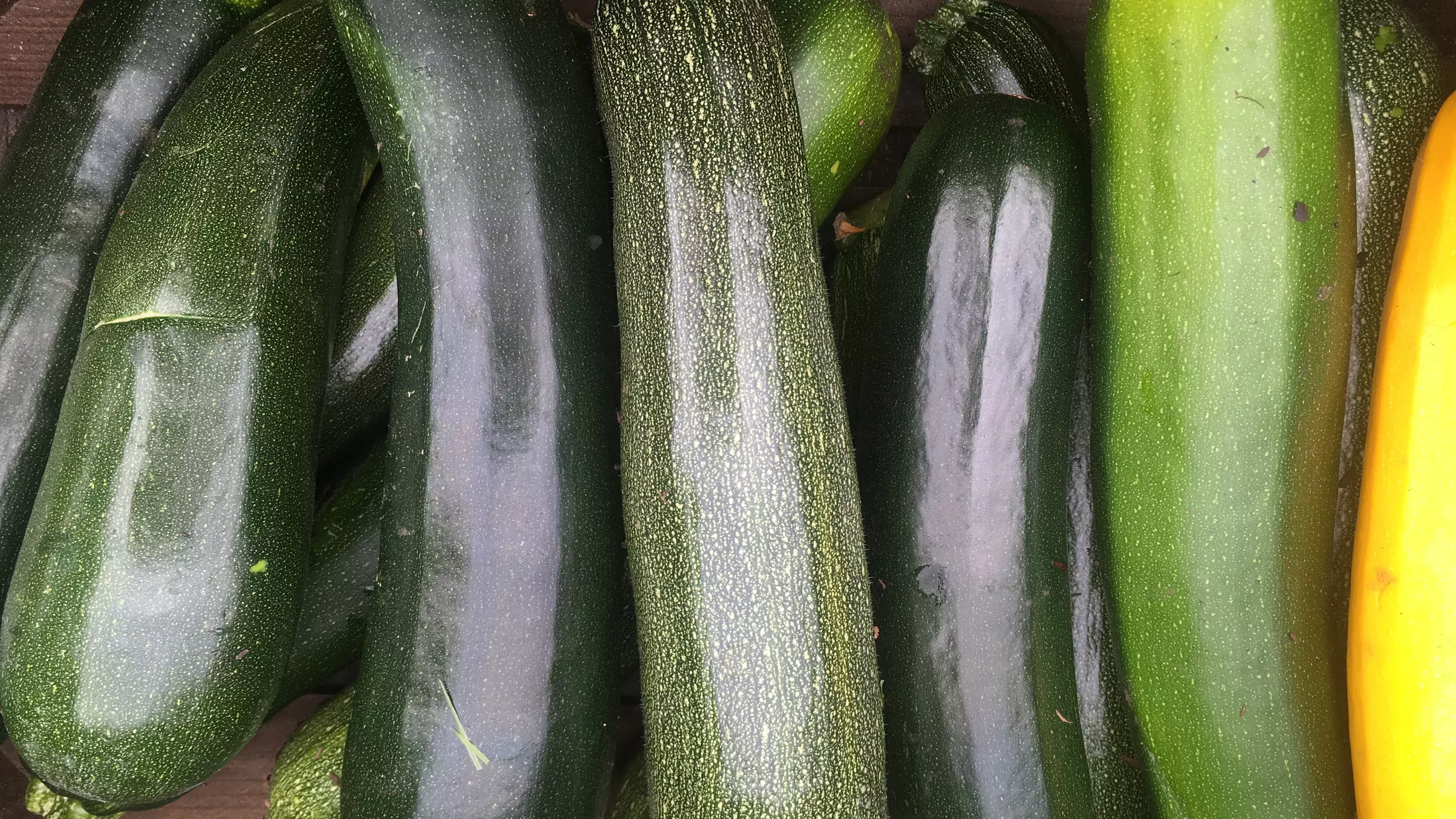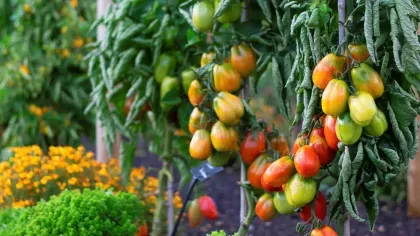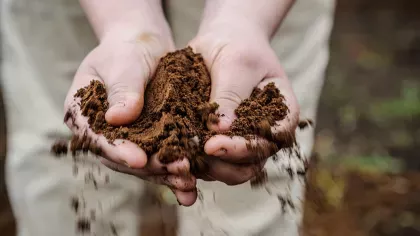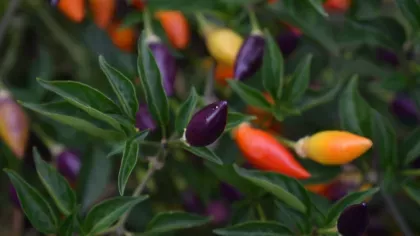9 August 2018
Courgettes: King of the summer veg
Whether they're fried, baked, or tossed in a salad, courgettes are a delicious summer staple. Kew Kitchen Gardener Héléna Dove tells us more about these speedy green growers.

What is a courgette?
Despite the green skin and vegetable-like appearance, courgettes are technically a fruit. This is because they come from a flower, and grow from a golden blossom that blooms from under the leaves.
Courgettes belong to the family Cucurbitaceae along with pumpkins, cucumbers and melons.
They tend to be bushy plants whereas many other cucurbits are trailing vines. This makes them perfect for growing in smaller urban gardens and pots.
Courgettes are the immature fruit of a courgette plant, and generally they’re picked at around 10cm. Once they get larger they’re referred to as marrows, which are more watery in flavour with a creamy flesh.
The courgette plant is monecious. This means that the plant has both male and female flowers.
Being monoecious means they can pollinate themselves. This means you only need to grow one plant, which is useful in a small garden.
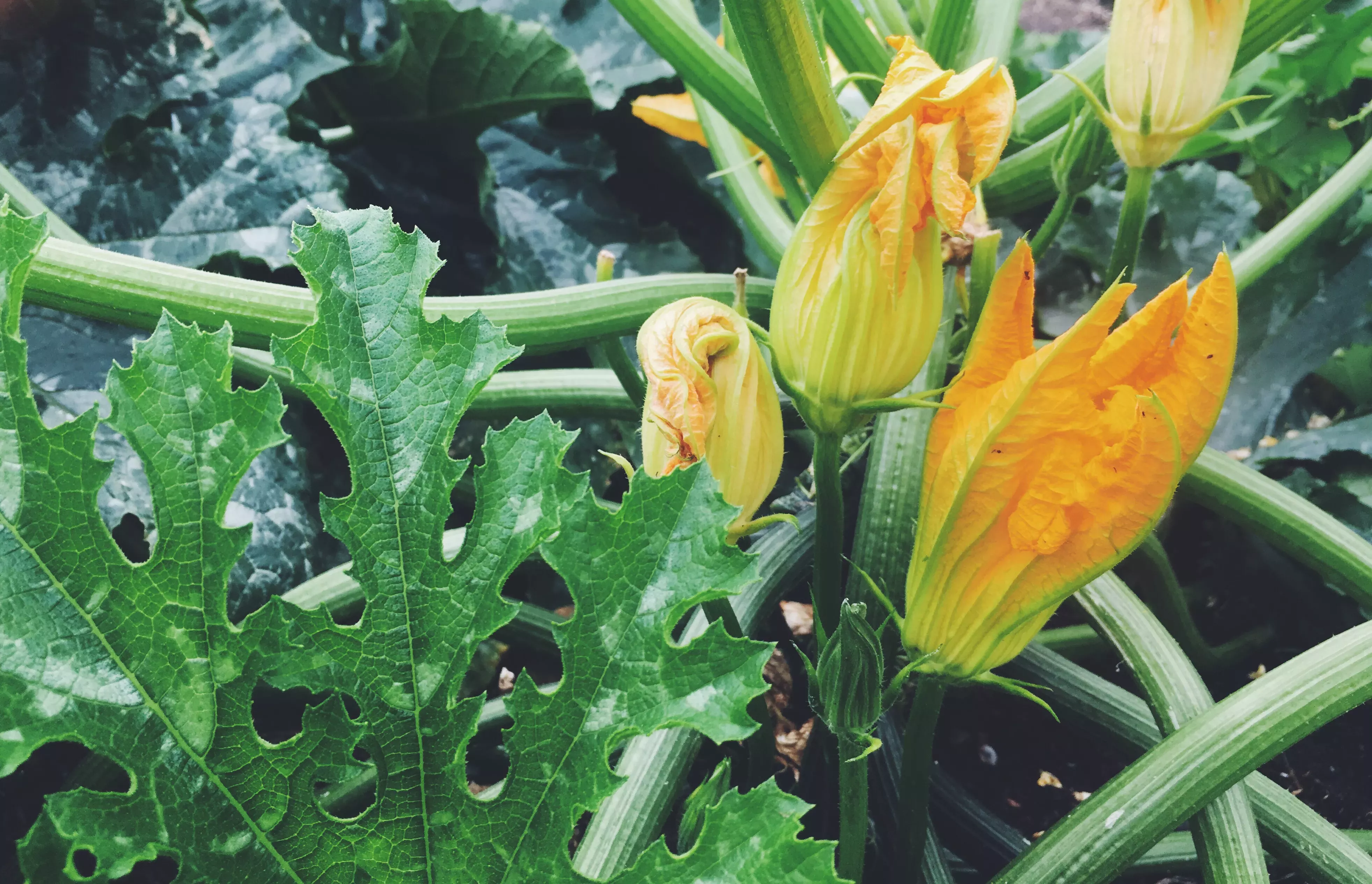
Speedy and greedy
Courgettes are an abundant crop at this time of year. In Kew’s Kitchen Garden we get around 4 - 6 fruits off each plant per week – plenty to keep us going!
Once they start fruiting they produce loads of courgettes. They’re really fast growing, and great for beginner gardeners as they’re almost a guaranteed success.
Their roots are fibrous and are mainly found near the surface of the soil. Courgettes needs moist, fertile soil, as they’re thirsty plants.
We pick the fruits when they’re younger, as this encourages the plant to produce more fruits. If a plant has lots of courgettes on it, they can be a sink for nutrients and inhibit the production of more flowers.
It’s not a hardy plant. It won’t survive frosts and cold weather, so we only plant it out once the risk of frost has passed (around the end of May). The topsoil needs to be nice and fertile, and care needs to be taken when weeding around the roots.
We start growing the plants in the glasshouse. They need a temperature of 16 - 24°C to break dormancy, with humid conditions, so the pots are placed on a cosy heat mat in April when I sow the seed.
Courgettes like their space. They like lots of room to grow, and I plant them around 70 cm apart. You can also grow them in a large pot and let them trail over the side.
In Kew’s Kitchen Garden we’re growing a large variety. They range from dark green, to yellow, to striped and round courgettes. The yellow ones taste slightly sweeter, and add great colour to a salad or stir-fry.
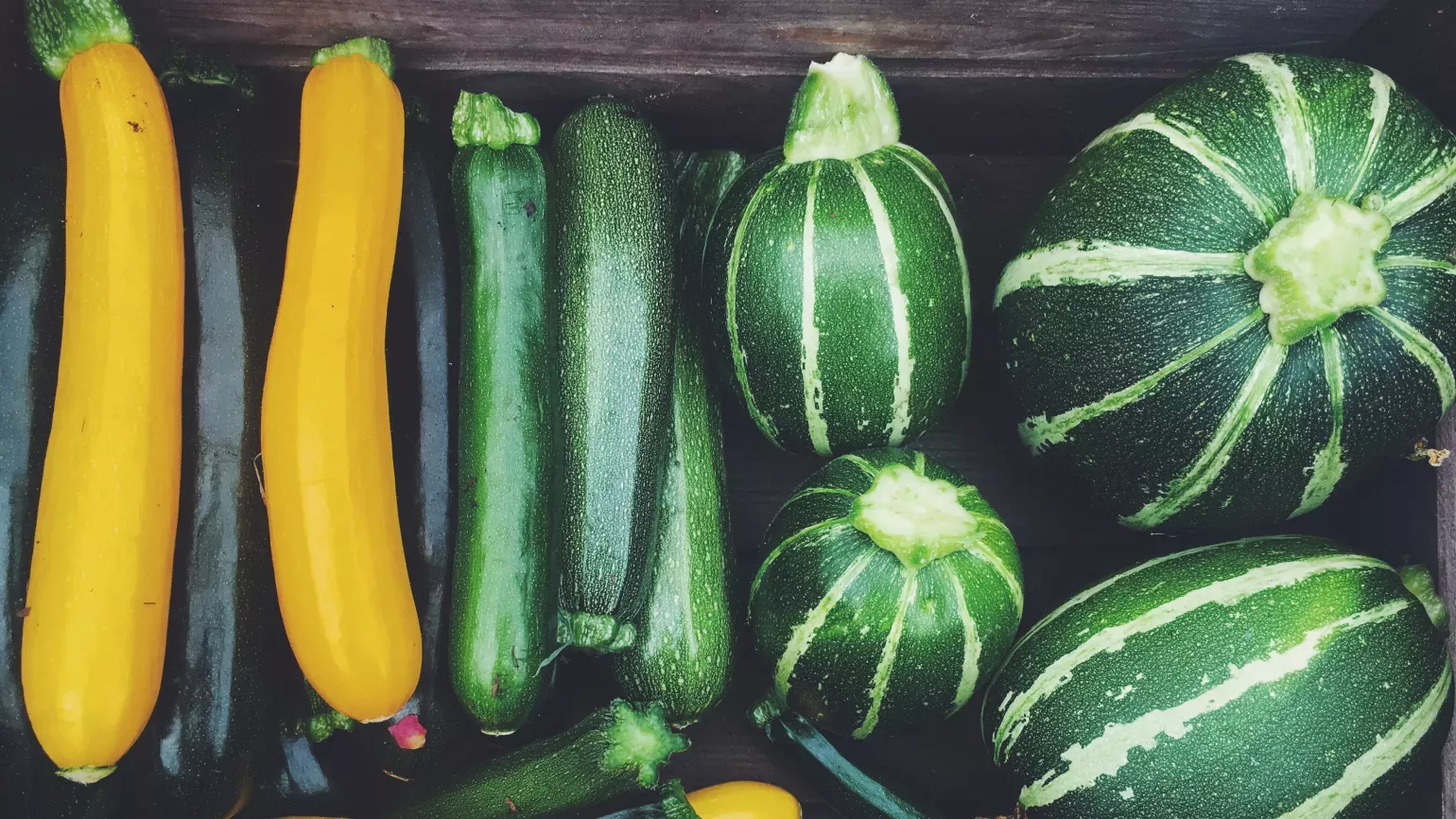
Alternative pest control
They’re one of the few plants that I don't have much of a pest problem with.
The main issue I get is powdery mildew on the leaves, which is a fungal disease that develops in humid conditions.
I simply take the leaves off when this strikes, as the mildew doesn't tend to occur until late in the summer. This is when the courgettes are slowing down production anyway.
There are some interesting remedies, such as spraying with milk or baking powder. These change the pH of the leaf surface making it less hospitable for the fungal spores.
Courgette facts
- Courgettes are one of the oldest crops we have evidence of. Seeds and rind dating back to 5500BC were found at an archeological dig in the Ocampo Caves, Mexico.
- A four-day courgette festival is held every year in Ohio, United States. The mighty courgette is celebrated with a variety of courgette dishes and a prize draw for the largest, most unusual, and best-dressed courgette.
- The large yellow flowers are also edible. You can lightly batter and fry them for a delicious snack.
- Courgettes provide useful amounts of immune system-boosting Vitamin C. They also have significant levels of potassium, which is key to controlling blood pressure.
Snack time
For a tasty snack, give these easy courgette and polenta chips a go from our Kew Gardens Children’s cookbook.
Ingredients
800g courgettes
100g polenta
50g parmesan cheese, grated
1 sprig of rosemary
200ml olive oil
Method
- Preheat the oven to 200°C (Gas Mark 6).
- Wash the courgettes and chop them length and widthways into chip-sized sticks.
- Put the polenta and parmesan in a bowl.
- Strip the leaves off the sprig of rosemary and finely chop. Add to the bowl of parmesan and polenta and mix together.
- Place the olive oil in a bowl. Dip each courgette chip in the oil and then coat them in the polenta mix.
- Place the chips on an oven tray and bake for 25 minutes, or until golden.
Come and visit our Kitchen Garden to find out what else we have in store.
